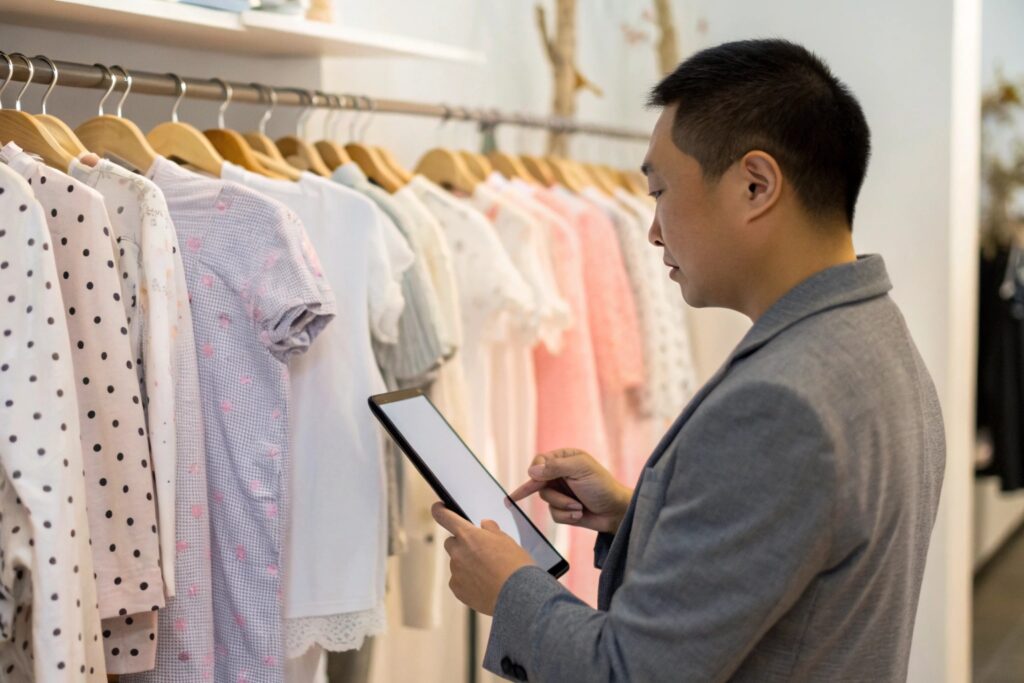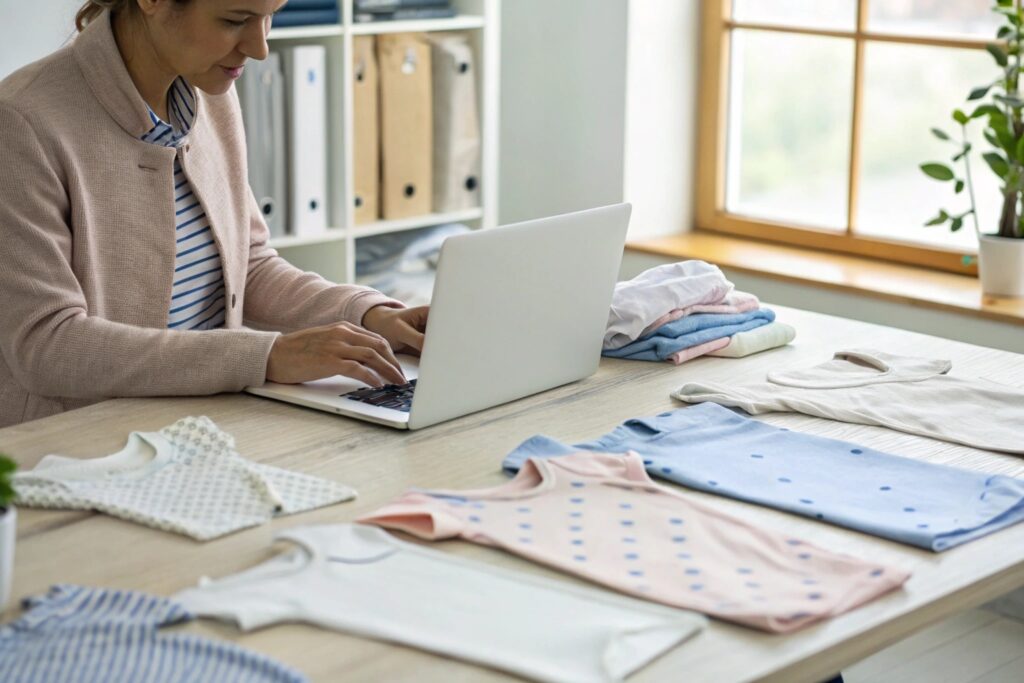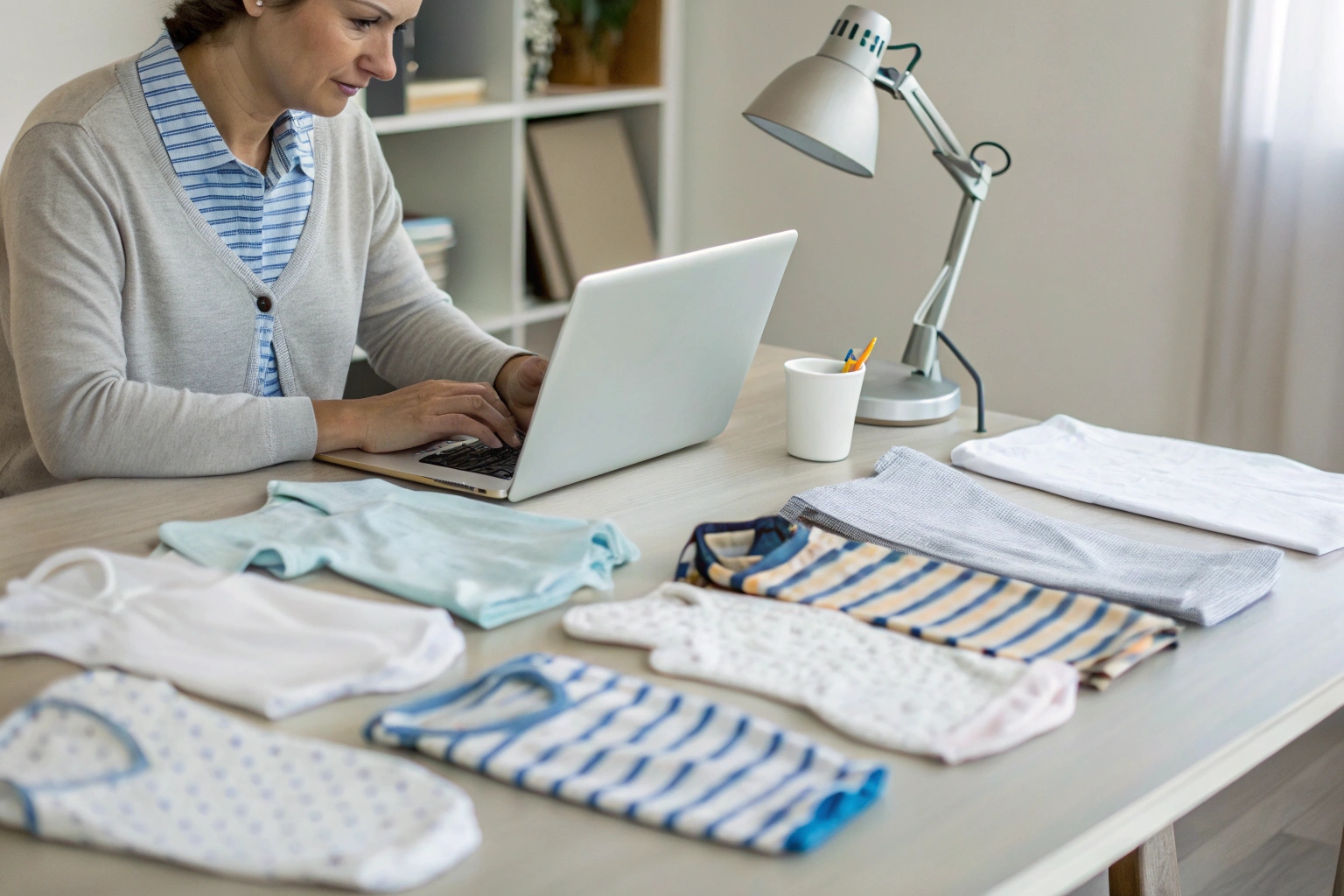Finding the right kidswear factory in China sounds easy—until miscommunication, missed deadlines, or fake certificates show up. If you’re sourcing newborn baby clothes, you can’t afford those risks.
To contact reliable kidswear manufacturers in China, start by searching verified platforms, craft a clear first email, and build trust through efficient communication.
We’ll walk through where to find top newborn clothing suppliers, which platforms work best, and how to email and talk to factories so you actually get what you ordered—on time.
Where to Find Verified Kidswear Suppliers in China?
If you’ve ever typed “babywear supplier China” into Google, you’ve probably seen dozens of sites offering thousands of options. But which ones are actually trustworthy?
You can find verified kidswear suppliers through trade shows, sourcing platforms, and Google—by checking reviews, certifications, and product focus.

What makes a Chinese kidswear supplier truly “verified,” and how do I tell if they’re a real factory?
Verifying a factory goes beyond checking a logo on a website. You need to look for official business licenses, ISO or BSCI certificates, and photo evidence of production lines. Many trading companies pose as factories, which may be fine, but not if you expect direct production. Some suppliers might even fake certificates to get your trust. I’ve seen this happen, and it cost me not just money—but a whole season of sales.
How can I filter newborn clothing suppliers from general garment factories that also make adult wear?
Some factories list “babywear” as a category, but they might only make adult t-shirts and outsource the infant clothes. I always look for clues: product photography with real newborn models, fabric certification like OEKO-TEX for sensitive skin, and MOQ tailored for babywear. Specialized factories will often use terms like “newborn layette” or “0-3M size chart” in their listings. If I don’t see that, I move on.
Best Platforms to Reach Chinese Clothing Manufacturers?
There are hundreds of B2B platforms claiming to connect you to manufacturers. But if you’ve ever been ghosted after sending an inquiry—or worse, got scammed—you know that platform matters.
The best platforms to contact real Chinese clothing factories are Alibaba, Globalsources, Tradeshows, Google, and niche sourcing websites focused on babywear.

How do I know if a B2B platform lists actual newborn clothing factories and not just middlemen?
On sites like Alibaba, I check if the supplier is “Verified” and look into the “Company Profile” section. Real manufacturers often show their factory address, production photos, and even videos. On Globalsources, suppliers who attend baby-focused expos often have stronger newborn lines. I avoid any seller who can’t show photos of sample rooms or who offers too many product categories—babywear, electronics, furniture—that’s a red flag.
Should I rely on LinkedIn, TikTok, or Instagram to contact manufacturers?
More factories are using social platforms, especially TikTok and LinkedIn, to share behind-the-scenes factory footage. I’ve found some great leads this way. But social media alone isn’t enough. I always ask them to send me official email addresses, registration documents, or arrange a video tour before I go further. Social media is a door—but don’t treat it like a contract.
What to Include in Your First Inquiry Email?
A good first email isn’t just about saying “Hi, I want to buy baby clothes.” It’s your one shot to stand out among hundreds of buyers—and get a real reply.
In your first inquiry, include key product details, order quantity, certification needs, timeline, and a short intro about your company.

What kind of product details should I mention when sourcing newborn clothing?
I always specify the fabric type (like organic cotton), the target age range (0–3M, 3–6M), the type of clothing (onesies, sleepsuits), and whether I need embroidery, snaps, or custom tags. I attach reference photos too. Here’s a simple sample table I often use in emails:
| Item | Fabric | Size Range | Quantity | Special Requests |
|---|---|---|---|---|
| Sleepsuit | Organic Cotton | 0–3M | 3,000 pcs | Custom logo + OEKO-TEX |
| Onesie 2pc | Cotton-Spandex | 3–6M | 2,000 pcs | Fold-over sleeves |
This kind of clarity saves time and shows the factory I’m a serious buyer.
Should I introduce my company or just talk about the product?
Both. I briefly mention who I am, where my company sells, and what we’re looking for. It’s like a pitch—but short. For example: “We’re a U.S.-based kidswear brand sourcing directly from China. Our newborn collection sells through e-commerce and retail.” This builds trust and helps the factory decide if we’re a fit.
How to Communicate Effectively with Chinese Factories?
Sometimes, the deal breaks not because of the product—but because of how we talk. Time zones, language gaps, and missed follow-ups ruin more deals than you’d think.
To communicate better with Chinese factories, keep your emails simple, follow up regularly, confirm every detail, and use WeChat or WhatsApp for quick chats.

Why do Chinese sales reps often misunderstand product specs or shipment terms?
Many times, it’s not bad English—it’s different assumptions. For example, “ready to ship” might mean stock to me, but to them, it means 30-day lead time. Or “FOB” means something else depending on the port. I’ve learned to explain every key term, add pictures, and summarize agreements in bullet points. A sample breakdown I use:
- Item: Cotton Baby Sleepsuit
- Quantity: 3,000 pcs
- Fabric: 95% Cotton / 5% Spandex
- Label: My brand logo
- Shipment term: FOB Shanghai
- Delivery time: Within 40 days
Clarity helps avoid drama.
How can I build a long-term communication system that works?
I always confirm everything in writing. Even if we talk on WeChat, I follow up with an email. I create a shared spreadsheet with production schedules, order details, and update logs. Some factories love it. I also ask for weekly updates by video or photos, especially during sampling or bulk production. Once you set this up, communication runs on autopilot.
Conclusion
Sourcing babywear from China isn’t just about finding a factory—it’s about building a smart system of research, outreach, and clear communication. That’s how I stay ahead of the delays, scams, and silent suppliers.










